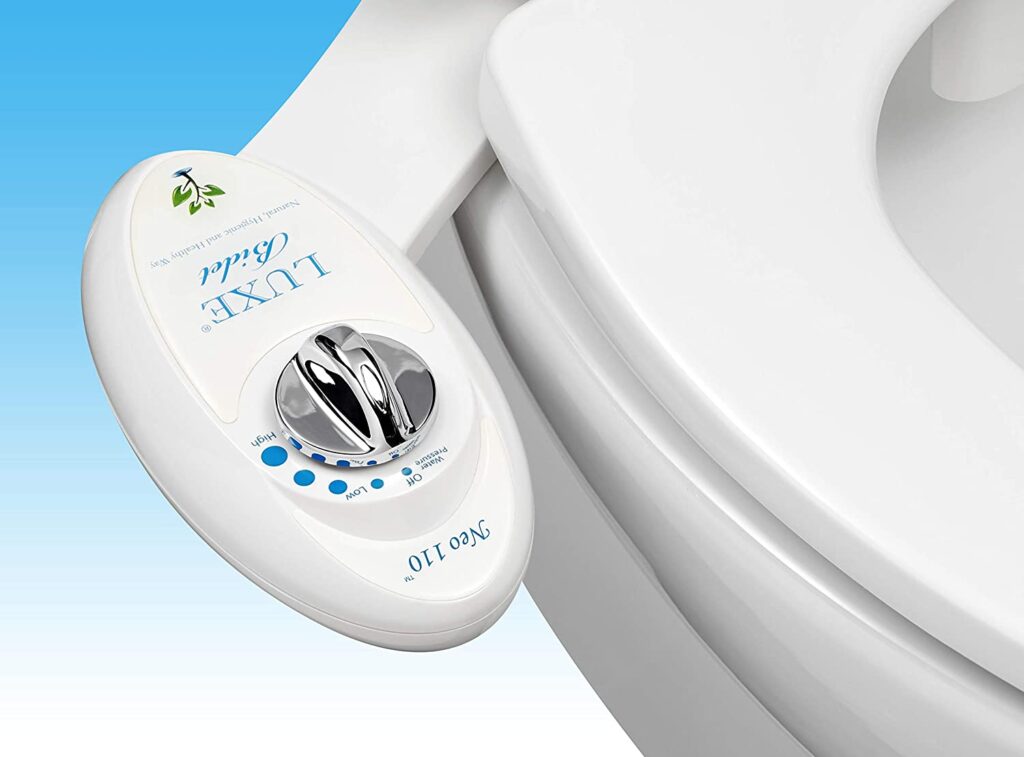Renovating a bathroom while you’re still living in your home can feel like a juggling act. You want to get the bathroom you’ve always dreamed of, but you also need to keep your daily routine on track. Whether you’re updating old fixtures, doing a full remodel, or just giving the space a fresh look, it can feel like a lot to handle. The noise, the mess, and even the temporary loss of your bathroom can make it feel like a challenge to keep everything running smoothly.
But don’t worry—renovating your bathroom doesn’t have to be a nightmare. With a little planning and a good strategy, you can get the bathroom you want without turning your life upside down. This guide will help you navigate the renovation process and make things go as smoothly as possible while you’re still living in your home.
Table of Contents
1. Assessing the Scope of Your Renovation
Before you dive into any renovation project, it’s important to figure out exactly what needs to be done. Understanding the scope of your project will help you make better decisions about your timeline, budget, and overall approach.
1.1 Determine What Needs Renovating
The first step is deciding what’s really needed for your bathroom. Are you planning big changes, like ripping out the old tub, reworking the layout, or installing new plumbing? Or are you just updating some cosmetic details, like changing the flooring, painting the walls, or replacing things like faucets and light fixtures?
A full remodel is going to take more time, effort, and money. But smaller updates, like new tiles or a sleek light fixture, can usually be done much faster and will make the space feel refreshed without as much disruption. Knowing exactly how much you want to change will help you plan better and set more realistic expectations.
1.2 Set Realistic Expectations
It’s easy to get excited about all the possibilities for your bathroom, but it’s important to be realistic about what can actually be done, especially when you’re living through the renovation. Some parts of your bathroom will probably be out of use for a while. For example, you might not have access to your shower or tub during certain stages of the project.
That doesn’t mean you can’t have a beautiful bathroom — it just means you need to pace the work and make sure you’re not setting yourself up for too much stress. Expecting everything to be done in a flash, or without any mess or noise, isn’t practical. Take a moment to align your expectations with what’s actually possible given the situation.
1.3 Budget Considerations
A solid budget is one of the most important parts of any renovation project. Not only will it help you stay on track financially, but it will also set expectations for the size of your renovation. Think about the costs of materials, labor (if you’re hiring pros), and any unexpected expenses that may pop up along the way.
Living through the renovation can also affect your budget. For example, if you plan on doing some of the work yourself, you can save money, but it’ll take more time. On the other hand, hiring professionals will speed things up but cost more. Start with a rough estimate, and always leave some wiggle room for those unexpected costs — it’s better to overestimate than to run out of money halfway through!
2. Plan the Renovation Phases
A bathroom renovation can feel overwhelming if you don’t break it down into smaller steps. The best way to keep things on track and reduce disruptions is to map out a clear plan.
2.1 Break the Project Into Manageable Stages
Bathroom renovations usually go through a few key stages, and each one should be done in order to make sure everything runs smoothly.
-
Demolition: This is where you remove the old tiles, fixtures, and anything else that’s outdated. It’s often the messiest part of the project, and your bathroom will probably be completely out of commission during this stage. The good news? Once demolition is done, you’re one step closer to your dream bathroom!
-
Plumbing and Electrical Work: If you’re moving fixtures or updating plumbing and electrical systems, this stage is crucial. It can take some time, especially if you’re making big changes, but it’s important to get it right the first time.
-
Installation: After the rough work is done, it’s time for the fun part — installing the new fixtures, cabinets, flooring, and more. This is when your bathroom will start to take shape and feel more like the space you want.
-
Finishing Touches: The last stage is about adding those final details like painting, installing hardware, and putting in accessories. By this point, your bathroom should look nearly finished, with only a few little things left to wrap up.
2.2 Timeline and Work Scheduling
To minimize disruptions, it’s important to carefully plan the timing of each step. You’ll want to avoid having your entire bathroom out of service for too long.
For example, you might decide to work on one section at a time. This way, you can keep using your sink or toilet while the bathtub area gets worked on. You could also schedule tasks like demolition and plumbing work for weekends or times when you’ll be out of the house.
Having a clear timeline helps you manage disruptions and set expectations. If you know your bathroom will be out of commission for a week or two, you can plan ahead by setting up a temporary bathroom in another part of your house or making arrangements for public showers.
2.3 Hiring Professionals vs. DIY
Deciding whether to hire professionals or go the DIY route depends on your budget and how much time you want to spend.
-
Hiring Professionals: If you don’t have much experience with bathroom renovations, hiring a licensed contractor may be the way to go. Professionals can do the job faster and make sure everything is up to code. The downside? It can get pricey, especially if you’re tackling a big renovation.
-
DIY Approach: DIY projects can be fun, rewarding, and save you money, but they can also take much longer, especially if you’re learning as you go. Simple tasks like painting or tiling are doable for a DIYer with the right tools. But more complex tasks like electrical work or plumbing should be left to the experts to avoid costly mistakes.
The key to making this decision is knowing your own skills and how much time you’re willing to put in. Keep in mind that while DIY can save money, it often takes longer and can lead to problems if you’re not prepared.
3. Living with the Renovation
Once the renovation starts, the reality of dealing with the mess, noise, and disruption will set in. But don’t worry! With a little planning and smart strategies, you can minimize the impact on your daily life. Here are some tips to help you live comfortably while your bathroom gets a makeover.
3.1 Set Up Temporary Bathroom Solutions
While your main bathroom is out of commission, you’ll need a backup plan. Setting up a temporary bathroom or powder room in another part of your home can make a big difference. Here’s how you can do it:
-
Use an Extra Room: If you have a guest room or even a large closet, you can temporarily turn it into a makeshift bathroom. Set up a portable toilet, small sink, and even a shower (if possible) in the space.
-
Portable Toilets: For larger renovations, renting a portable toilet (a “porta-potty”) outside your home might be a good option. Many companies offer portable toilets for rent, which can be super helpful if your bathroom will be out of service for a while.
-
Shower Alternatives: If the shower is getting renovated and you only have one bathroom, think about setting up a temporary shower. You can buy or rent a shower tent that attaches to a hose, or use a camping shower if you have a backyard. Another option is to use a public gym or community center with shower facilities for a few weeks.
The key is to plan for the essentials and create a temporary setup that’s easy to use and not too inconvenient.
3.2 Create a Clean and Safe Space
Renovations can be messy, especially when it’s a bathroom renovation. Dust and debris will likely be everywhere, but you can manage the mess with a few simple steps:
-
Seal Off the Area: Use plastic sheeting or painter’s tape to cover doorways, vents, and windows to contain the dust. Make sure to seal off entry points between the work area and the rest of the house.
-
Protect Surfaces: Lay down drop cloths or tarps to protect your furniture and floors from dust, debris, or spills.
-
Clean Regularly: Dust can build up quickly depending on the stage of the renovation. You could hire a cleaning service or ask a family member to clean periodically. This will help keep things cleaner and safer as you live through the mess.
-
Ventilation: Bathroom renovations can create a lot of dust and strong fumes, so make sure to have good ventilation. Use fans or open windows to keep the air fresh and reduce dust buildup.
3.3 Managing Family Schedules
If you have a family, managing everyone’s schedule around the bathroom renovation can be one of the biggest challenges. Since the bathroom might be out of service for part of the day or even a few days, coordinating your family’s needs will be key.
-
Plan Shower Times: To avoid everyone fighting for the shower in the morning, create a shower schedule. Early risers can shower before work or school, and others can shower in the evening or use a temporary shower solution.
-
Plan Bathroom Breaks: If you only have one bathroom, you’ll need to plan bathroom breaks. Consider adjusting meal times, especially if you have kids, to avoid bathroom bottlenecks.
-
Extra Restroom Access: If your renovation is going to take a few weeks, renting or setting up a second portable toilet might be worth the extra cost. It can make a huge difference, especially if you have a big family.
It’s also a good idea to keep your family in the loop about the renovation timeline, so they know when parts of the house will be off-limits.
3.4 Protecting Other Areas of Your Home
Bathroom renovations can send dust and debris throughout your home if you’re not careful. Here are some ways to keep the rest of your house protected:
-
Use Drop Cloths in Hallways: If workers need to move materials or tools from room to room, lay down drop cloths or protective mats to shield the floors in hallways and adjacent rooms.
-
Clean Footwear Policy: Ask your contractors and family members to take off their shoes or wear shoe covers when walking through non-renovated areas. This simple step can prevent dust from spreading all over your home.
-
Air Purifiers: To keep the air cleaner, consider using an air purifier in nearby rooms. It will help capture dust particles and keep the air fresher while the renovation is going on.
4. Dealing with Common Renovation Challenges
Even with careful planning, bathroom renovations come with their share of challenges. Here’s how to tackle some common issues that can arise during the process.
4.1 Plumbing Issues
Plumbing problems are common during bathroom renovations, especially if you’re changing the layout or installing new fixtures. Here are a few things that might crop up:
- Leaking Pipes: Sometimes pipes can get damaged during demolition or installation. Make sure to address any leaks immediately, as water damage can lead to much bigger problems down the line.
- Clogged Drains: Renovations can cause debris to clog your drains. Keep your drains covered to prevent dirt and grout from clogging them. If issues arise, call a plumber right away to avoid larger plumbing problems.
4.2 Limited Access to Bathroom
Having limited access to your bathroom is one of the hardest aspects of a renovation. To deal with this:
- Establish Backup Plans: Set up an alternative bathroom solution, as mentioned earlier, and let your family members know where they can go to freshen up during the renovation period.
- Stay Flexible: Be ready for changes in the timeline that might delay access to your bathroom. Work with your contractor to set realistic timelines and stay in communication to avoid surprises.
4.3 Noise and Disruption
Renovations can get loud, especially if you’re using heavy machinery or doing demolition work. To cope with the noise:
- Schedule Work Hours: Talk to your contractor about limiting work hours to certain times of day. This way, noisy tasks can be completed when everyone is away at work or school, and the house can stay relatively quiet during evenings or weekends.
- Use Noise-Cancelling Headphones: If you’re home during work hours, consider using noise-canceling headphones or earplugs to block out the noise while still staying on top of other tasks.
5. How to Stay Sane During Your Bathroom Renovation
Renovating a bathroom while living in the house can be overwhelming. Here are some tips to help you keep your sanity throughout the process.
5.1 Maintaining Your Routine
Renovations don’t have to disrupt your entire routine. Here’s how to stay grounded:
- Stick to Your Normal Schedule: Try to keep meal times, bedtimes, and other routines as normal as possible. If renovations are causing significant disruptions, try to schedule time outside the house to maintain some consistency.
- Focus on Small Wins: Celebrate the small victories — like having the bathroom back in action for a shower — to keep morale high.
5.2 Communicating with Contractors
Open and clear communication with your contractors is key to a smooth renovation process:
- Set Expectations Upfront: Make sure everyone is clear on timelines, the scope of work, and potential delays. This will help avoid misunderstandings and stress.
- Check-in Regularly: Stay updated on progress. Frequent check-ins with your contractor will help you address issues as they arise and keep the renovation on track.
5.3 Managing Family Expectations
Finally, managing expectations with your family or housemates is crucial:
- Be Transparent: Keep everyone in the loop about what’s happening, especially if certain parts of the bathroom will be unavailable for a while.
- Set Boundaries: Establish areas of the house that are off-limits during the renovation, and encourage your family to respect those boundaries for their safety and comfort.
6. Post-Renovation: Cleaning Up and Enjoying Your New Bathroom
Once your bathroom renovation is complete, it’s time to shift focus to the final steps: cleaning, inspecting, and adding those finishing touches that will make your bathroom feel like a brand-new space. Here’s how to wrap up your renovation and start enjoying your upgraded bathroom.
6.1 Final Inspection
Before you celebrate your beautiful new bathroom, it’s essential to do a final walk-through with your contractor. This step will ensure that everything has been completed to your satisfaction and that no details are overlooked.
- Check the Work: Walk through the entire bathroom and inspect the quality of the work. Check that tiles are properly installed, fixtures are secure, and everything looks finished. Look for any gaps, rough edges, or areas that might need touch-ups.
- Test All Fixtures: Turn on faucets, test the shower, check for leaks, and flush the toilet. Make sure everything functions as it should. If something isn’t working properly, it’s best to address it before the project is officially completed.
- Review Details: Make sure all cosmetic touches, like paint, caulking, and trim work, are clean and even. You’ll want to be certain that everything looks polished before you sign off on the project.
If you notice any issues, be sure to address them right away. A reputable contractor should be willing to fix any problems at this stage.
6.2 Cleaning Up
After a renovation, there’s usually quite a bit of dust, debris, and leftover materials. Cleaning up your bathroom not only helps it look its best but also ensures it’s safe to use.
- Remove Construction Dust: Start by wiping down all surfaces, including countertops, shelves, and light fixtures. Dust can settle on nearly every surface, so be thorough. Use a microfiber cloth or a damp rag to avoid scratching surfaces.
- Clean Floors and Walls: Sweep up any debris from the floors and clean the walls. If any adhesive, grout, or paint splatters are present, remove them carefully. You can use a cleaner that’s suitable for your bathroom materials (tile, glass, etc.).
- Disinfect the Space: After the visible dirt is gone, make sure to disinfect high-touch areas like faucets, handles, and toilet seats. This will give you peace of mind that your new bathroom is safe and hygienic.
- Clean the Air: If the air in your bathroom feels stuffy or dusty, consider running an air purifier for a few days to clear out lingering particles. Ventilation is key to a fresh, healthy space.
6.3 Adding the Finishing Touches
Now that the renovation is complete and everything is cleaned up, it’s time to add the final touches that make the space feel personal and inviting.
- Accessorize: Small accessories can go a long way in transforming the look of your bathroom. Consider adding items like a stylish shower curtain, fresh towels, or a rug that complements your bathroom’s new aesthetic.
- Decorative Items: Add a few decorative touches like plants, candles, or framed artwork. A small potted plant on the countertop or a few decorative items on the shelves can give the room life and warmth.
- Storage Solutions: If your renovation included extra storage, be sure to maximize that space. Organize shelves, drawers, and cabinets neatly, and consider adding bins or organizers to keep things tidy and functional.
- Lighting: Lighting plays a big role in how your bathroom feels. Consider swapping out your old light fixtures for modern, energy-efficient options. You can also add some LED strip lights under the vanity for an added touch of elegance.
These final touches will help make your bathroom feel like it truly belongs to you and reflect your personal style.
7. Conclusion
Renovating a bathroom while living in your home is no small feat, but with thoughtful planning and some flexibility, it can be a smooth and rewarding process. Here’s a quick recap of the key advice we covered:
- Plan Ahead: Assess the scope of your renovation, set a realistic budget, and break the project into manageable phases to avoid unnecessary stress.
- Manage Disruptions: Set up temporary bathroom solutions, maintain clean spaces, and protect other areas of your home from dust and debris.
- Communication is Key: Whether you’re handling the renovation yourself or working with professionals, open and honest communication ensures everything goes as planned.
- Enjoy the Process: Despite the inevitable challenges, keep your focus on the
end goal — a beautiful, functional bathroom. And when it’s all over, don’t forget to enjoy the process of adding your own personal touches to the space.
By following these strategies, you can not only survive the renovation process but thrive in the end. With good planning and a little patience, your bathroom transformation will be well worth the effort.
8. FAQs
Q1: How long will my bathroom renovation take?
The timeline for a bathroom renovation can vary depending on the scope of the project. A simple update might take a few days to a week, while a full remodel could take 3-6 weeks or longer. Work with your contractor to establish a clear timeline.
Q2: Can I use my bathroom during the renovation?
If you have multiple bathrooms in your home, you can use them during the renovation. However, if you only have one bathroom, setting up a temporary bathroom or portable toilet is a good idea while the renovation is underway.
Q3: How do I prevent dust from spreading during the renovation?
Use plastic sheeting or tarps to seal off the renovation area. Additionally, covering vents and doors, and making sure everyone working in the space uses shoe covers, will help contain dust and debris.
Q4: How much should I budget for a bathroom renovation?
The cost of a bathroom renovation varies based on the size, quality of materials, and whether you’re doing it yourself or hiring professionals. For a basic update, costs might range from $5,000 to $10,000, while a full remodel could exceed $20,000.
Have you recently undergone a bathroom renovation, or are you planning one? We’d love to hear about your experiences! Leave a comment below and share any tips or questions you might have. If you need more advice or have specific concerns, feel free to ask — we’re here to help guide you through your renovation journey!






